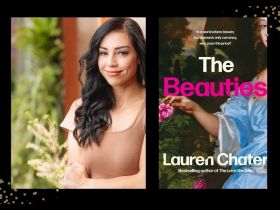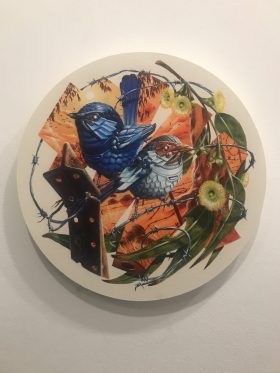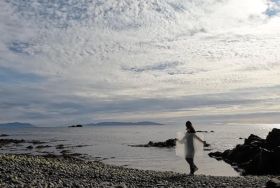Victoria’s first creative industry policy Creative State is a comprehensive document backed by $115 million of funding that aims to cement Victoria’s position as the pre-eminent cultural destination in Australia.
Front and centre of Creative State is the development of the people who work in the sector. By ‘backing creative talent’the policy recognises that it’s not just infrastructure or access to capital that creates successful creative industries, but ensuring people have the skills, knowledge and abilities to be successful.
Read: 40 ways the arts will improve with $115m new funds
Creative State acknowledges that career pathways in the creative industries don’t necessarily progress in a linear manner from education to employment within an organisation.
Instead, careers in the creative industries are considered to be protean or boundaryless characterised by non-linear moves unrestrained by organisational or industry boundaries. We know from research into the arts sector that there is a high likelihood that creative workers will work multiple jobs simultaneously, freelance, contract and volunteer.
Read: How to build a portfolio career
To navigate the flexible, often precarious and rapidly changing labour market of this industry while developing creative practice requires specific knowledge and capability. To help achieve this Creative State recommends the creation of a Talent Development Program. This program would include industry experience and development opportunities such as ‘training, mentoring, secondments, residencies and other career advancement opportunities’.
In my research across nine creative industries, I have yet to find a creative worker who suggested a mentoring program gave them a tangible benefit.
What this program will look like is unknown, but my research into career development across the creative industries suggests there are a few considerations that could help make such programs successful.
Firstly, there needs to be stronger links between creative educational institutions and industry. While this can include initiatives like internships, we need to ensure they are structured learning opportunities with fair remuneration for services, as opposed to the unpaid “internships” that are really free manual labour to sustain often cash strapped organisations.
Secondly, those in the early stages of their career can also benefit from successful role models. Role models don’t have to be award winning nor internationally recognised creative practitioners. Instead they can be people who have built successful protean careers, who demonstrate that creative careers can be just as rewarding as those in sectors that are perceived as more traditionally stable. Students, potential students and parents of students need to hear more positive narratives around the prospects for creative graduates.
Thirdly, many creative graduates will not move into organisational roles within creative industries. If they do, they will transition in and out of them on contract and other flexible work arrangements. Creative educators need to prepare graduates for these variable work practices such as undertaking multiple jobs and starting their own initiatives. Creative graduates need to focus on the entrepreneurial career skills, not just the economic kind, which will help them gain the requisite experience to facilitate successful work in their industry.
In my research across nine creative industries, I have yet to find a creative worker who suggested a mentoring program gave them a tangible benefit. Creative workers do learn from others, but not always hierarchically. They learn from peers, partners, co-workers and staff, as well as those more senior to them. Creative practitioners are experts in what is known as social learning. Social learning are “groups of people who share a concern or passion for something they do and learn how to do it better as they interact regularly.”
Creative workers through their creative work conduct this type of learning every day, not necessarily intentionally, and often unrecognised as development. For participants in my study this includes activity like developing a writing group, participating in a crafting weekend or producing theatre productions. Working collaboratively with others, even when undertaking individual arts practices like the visual arts, develops career and leadership skills while also providing valuable psychosocial support that maintains career optimism. While this is most often done through collective enterprise, it can also be supported through sharing knowledge in co-working spaces, making initiatives like ACMI-X all the more valuable.
Creative workers need to understand how to reflect on and maximise these social learning activities and see their importance as career enhancers. It is not necessarily enough to simply participate in structured training programs that teach theory, or be matched with an industry mentor with whom they aren’t actually working.
Over the course of my research I’ve seen people I like to call the ‘collectors’. Collectors enjoy gaining different experiences, and moving from one job to the next.. They like to be selected to participate in leadership programs and have the validation that comes from being seen as a ‘talented’. What the collectors often neglect however, is putting that learning into practice and reflecting to make sense of what they learned and how it can be applied into their particular contexts.
Another group of research participants I like to call the ‘community builders.’ The community builders bring together people to undertake their creative projects. They seek out others with like-minded passions and complementary skills to produce work. They don’t often attend training programs because they don’t have the time or money or they weren’t chosen when they applied. Instead, through the process of doing their work and learning simultaneously, they are gaining more tangible career and leadership skills than their collector counterparts.
We need more community builders in the creative industries, and across the economy more broadly.
While formal training programs often do broaden the horizons of participants and introduces them to new techniques, what enhances creative worker’s careers is participatory learning. One of the benefits of this type of learning is that once the principles are understood, there is no cost.
Before we pay large sums of money to consultants to develop leadership programs for the Victorian creative sector, let’s tap into the inherent learning and knowledge already present in the industry.
Tell the stories of successful practitioners, prepare our creative graduates for the realities of a creative career and build on the already successful social learning techniques that are occurring in studios, artist run initiatives and theatres. Let’s learn from the sector, not teach it.





